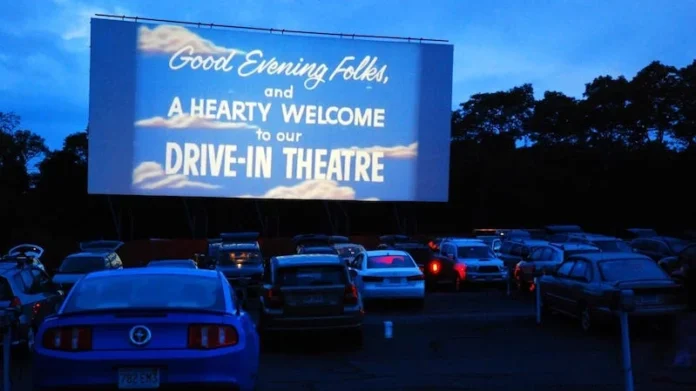“Outdoor movie series are popular in many locations around the US as well as elsewhere in
the world. Los Angeles, which prides itself on being the ‘movie capital of the world,’ was
early in establishing outdoor movies as a social event. Over time, the film series moved from
a focus on film to adding an array of entertainment to enhance the experience. Cinespia has
a long tradition of having DJs play music before and after screenings, but more recent
additions include a photo booth that encourages audience members to dress in costume
and to take on the aura of a cast member by entering into a mockup of the film’s space and
sensibility. The move to a more party-like atmosphere at Cinespia was accompanied by a
change from films that could be classified as classic, obscure, or film noir to a slate stressing
cult contemporary films instead.
Established after Cinespia, outdoor movie series like Street Food Cinema,
Eat|See|Hear, and Electric Dusk Drive-in have primarily focused on cult contemporary films.
They have also focused attention on food trucks, live music, and other forms of
entertainment that may or may not be relevant to the film being screened on any given
evening. The popularity of cult contemporary films at outdoor screenings offers a view of
the changing nature of moviegoing. Where cinema audience members have been irate over
the behavior of other moviegoers, especially those who do not hesitate to use smartphones
while the movie is playing, outdoor movie audiences talk, sing along, and shout out lines of
dialogue during the film. These behaviors are not only acceptable, they are desirable.”
The outdoor movie has always felt so quintessentially American to me. A shared gathering to watch another Hollywood production in a large outdoor space that also includes gorging on popcorn, candy, and slushy – what could better incapsulate the American spirt? Levitt’s paper hits just at this, and how nostalgia for this era of shared experiences has been instrumental in keeping the outdoor movie experience alive.
I found it compelling just how much of the modern outdoor movie experience isn’t related to the movie at all. Instead, modern audiences are much more concerned with the environment and community aspects entangled with this form of viewership (Levitt, 2016). The personal meaning of the experience often trumps any plot or climactic ending when viewers are asked to reflect on their move experience. While initially shocking, when thinking back on the few times I’ve had the ability to see an outdoor movie it’s incredibly true. I remember the songs we sang on the drive out of the city, the bright stars, how fresh the buttered popcorn tasted, and what it felt like to be surrounded by my friends while watching our favorite films.
This notion of nostalgia and community feels so absent in modern times, when streaming allows you to watch a movie from anywhere and social media frequently replaces real human connection. In an era where individual experiences are so often the norm, how can we honor the collective experience of the outdoor movie? Additionally, how can the vehicles we watch these movies from contribute to this shift?
References
- Levitt, L., (2016). Hollywood, nostalgia, and outdoor movies. Participation: Journal of Audience and Reception Studies, 13(1), 218-233. https://www.participations.org/13-01-11-levitt.pdf
- [Untitled Image of an Outdoor Movie], (2023). The History of Drive-In Movie Theaters (and Where They Are Now), New York Film Academy, https://www.nyfa.edu/student-resources/the-history-of-drive-in-movie-theaters-and-where-they-are-now/




